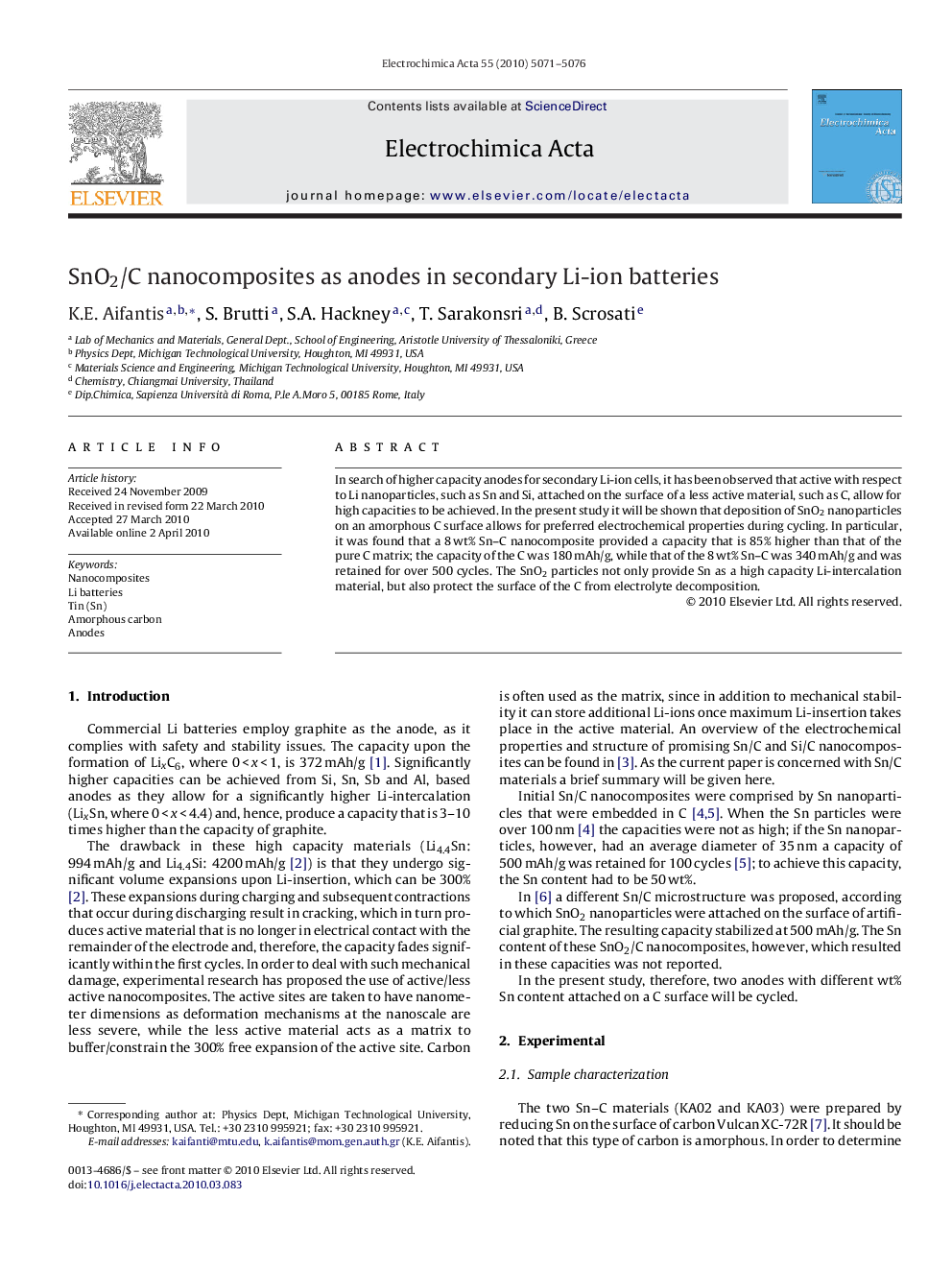| Article ID | Journal | Published Year | Pages | File Type |
|---|---|---|---|---|
| 192408 | Electrochimica Acta | 2010 | 6 Pages |
In search of higher capacity anodes for secondary Li-ion cells, it has been observed that active with respect to Li nanoparticles, such as Sn and Si, attached on the surface of a less active material, such as C, allow for high capacities to be achieved. In the present study it will be shown that deposition of SnO2 nanoparticles on an amorphous C surface allows for preferred electrochemical properties during cycling. In particular, it was found that a 8 wt% Sn–C nanocomposite provided a capacity that is 85% higher than that of the pure C matrix; the capacity of the C was 180 mAh/g, while that of the 8 wt% Sn–C was 340 mAh/g and was retained for over 500 cycles. The SnO2 particles not only provide Sn as a high capacity Li-intercalation material, but also protect the surface of the C from electrolyte decomposition.
